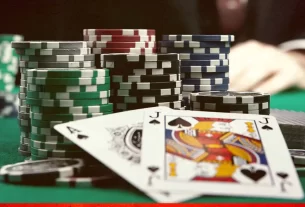Strategy for winning at Omaha Hi-Lo poker requires an intimate knowledge of how the game operates. It necessitates finding a balance between premium starting hands and an intimate knowledge of low hands in Omaha.
A low hand is composed of five cards with the highest card not exceeding 8. Straights and flushes do not count towards this total.
Basic rules
Before beginning to play Omaha Hi-Lo Poker, it’s essential to understand its fundamental rules. These include the betting format, number of players at a table and how much money can be won.
Omaha Hi-Lo is a card game played with a 52 card deck and between two and nine players. Each player receives four ‘hole’ cards which must remain private, as well as five ‘community’ cards that everyone can see and use.
To create a winning hand, you must use both of your ‘hole’ cards and three of the ‘community’ cards. At showdown, the highest high hand will win half of the pot.
In Omaha Hi-Lo, players may win with a low hand if it contains five cards starting at eight or lower (see our poker hand ranking page for more info). For instance, the best low hand is an Ace-2-3-X and the worst is Quads.
Betting intervals
Omaha hi-lo is a split pot poker game in which the best “high” hand wins half of the pot. Players are dealt four cards and must use two of those cards along with three community cards to form a five-card poker hand.
To play Omaha hi-lo, you must decide on a betting format and how many chips to place into the pot preflop, on the flop, turn and river. Typically, players will place one big blind preflop and on the flop; two big blinds for turns and rivers.
A great strategy for winning Omaha hi-lo is to hit the flop and then bet with all your resources on the turn and river. This gives you the best chances of beating your competition while making the most of any strong hands that may appear on the board.
Limits
Omaha Hi-Lo is a variant of PLO/pot-limit Omaha known as “Omaha ‘high”, in which players compete for both the low” and “high” halves of the pot.
Omaha Hi-Lo is different than poker, where postflop play is essential, because winning starts with your starting hands. That’s why it’s critical not to gamble on bad cards with low winning expectations before the flop when there are large dogs involved.
Playing limit games offers you the unique opportunity to make money. Knowing the pot odds and not caring whether other players call or not, you could potentially win money even with weak starting hands by raising.
Pocket Aces and two high cards are the optimal hands to raise with when facing off on the flop. Raising with this combination often narrows down your options before the flop, especially when there are three high cards on it.
Bluffing
Bluffing is an essential element of poker strategy, yet one which many neglect. Fear of losing chips may prevent people from engaging in this tactic, but bluffing can actually add significant value to your game.
Your ability to execute a successful bluff depends on several factors, including the image of your opponents, betting history of your hand, position and strength. The most successful bluffs will be those that make sense to both of you and generate maximum profit over time.
A common bluff is to check-raise pre-flop and then turn with a weak low hand (such as two pair). This is an advantageous position to bluff since your opponent likely already checked or turned and there’s no chance for him to fold on the river.





